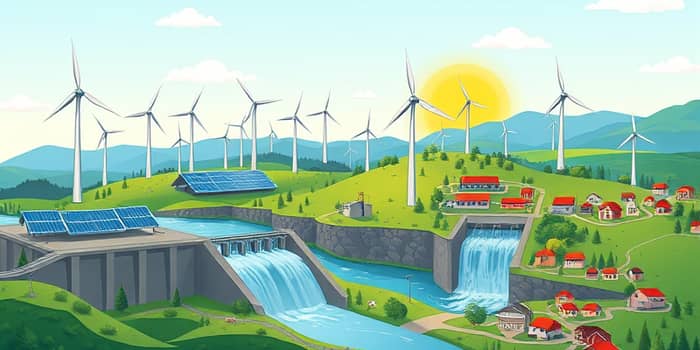
As the world confronts the urgency of climate change and economic volatility, renewable energy emerges as both a beacon of hope and a strategic investment frontier. From record-breaking solar installations to transformative policy incentives, the momentum is undeniable. This article explores how renewable energy capacity projections are reshaping markets, driving innovation, and offering practical opportunities for investors, communities, and policymakers alike.
Global renewables continue to outpace overall electricity demand growth. In 2025, solar and wind installations are expected to satisfy more new demand than any other source, driven by plummeting costs and robust investment flows.
Over the last decade, wind and solar increased their share of global electricity production from just over 4% to 15%, with solar and wind capacity increasing eightfold.
In the United States, renewable capacity is forecasted to rise from 429.6 GW in 2024 to 1,002 GW by 2033 (CAGR: 3.64%). Solar alone could reach 673 GW by 2034—enough to power over 100 million homes. Annual solar additions of 30 GW today may double by 2030, while renewables comprised 93% of new US capacity additions through September 2025.
Several factors intertwine to accelerate the clean energy transition:
Clean energy investment is surging, with annual global commitments projected to exceed $4 trillion by 2025. In 2025 alone, $2.2 trillion flows toward clean energy and electrification, double the capital directed at fossil fuels.
Key investment vehicles include:
Renewable trajectories vary by geography but share a common theme: tailored policy, local innovation, and community engagement.
Despite remarkable gains, hurdles remain:
Addressing these challenges requires coordinated action: policymakers must align incentives with decarbonization goals, utilities must evolve grid operations, and investors should support projects that guarantee fossil fuel displacement.
The shift to renewables delivers profound benefits:
The path ahead holds even greater promise. Emerging technologies such as green hydrogen, advanced nuclear reactors, and long-duration storage and vehicle-grid integration represent the next frontiers of decarbonization. Meanwhile, rapid cost declines will unlock new markets across Africa, Latin America, and Southeast Asia.
However, capacity additions alone are insufficient. Policymakers, investors, and communities must ensure that renewables actively displace existing fossil assets through thoughtful retirement strategies and grid planning.
By embracing a holistic approach—aligning policy, finance, technology, and community engagement—we can not only build robust investment portfolios but also forge a cleaner, more equitable planet for future generations.
References





